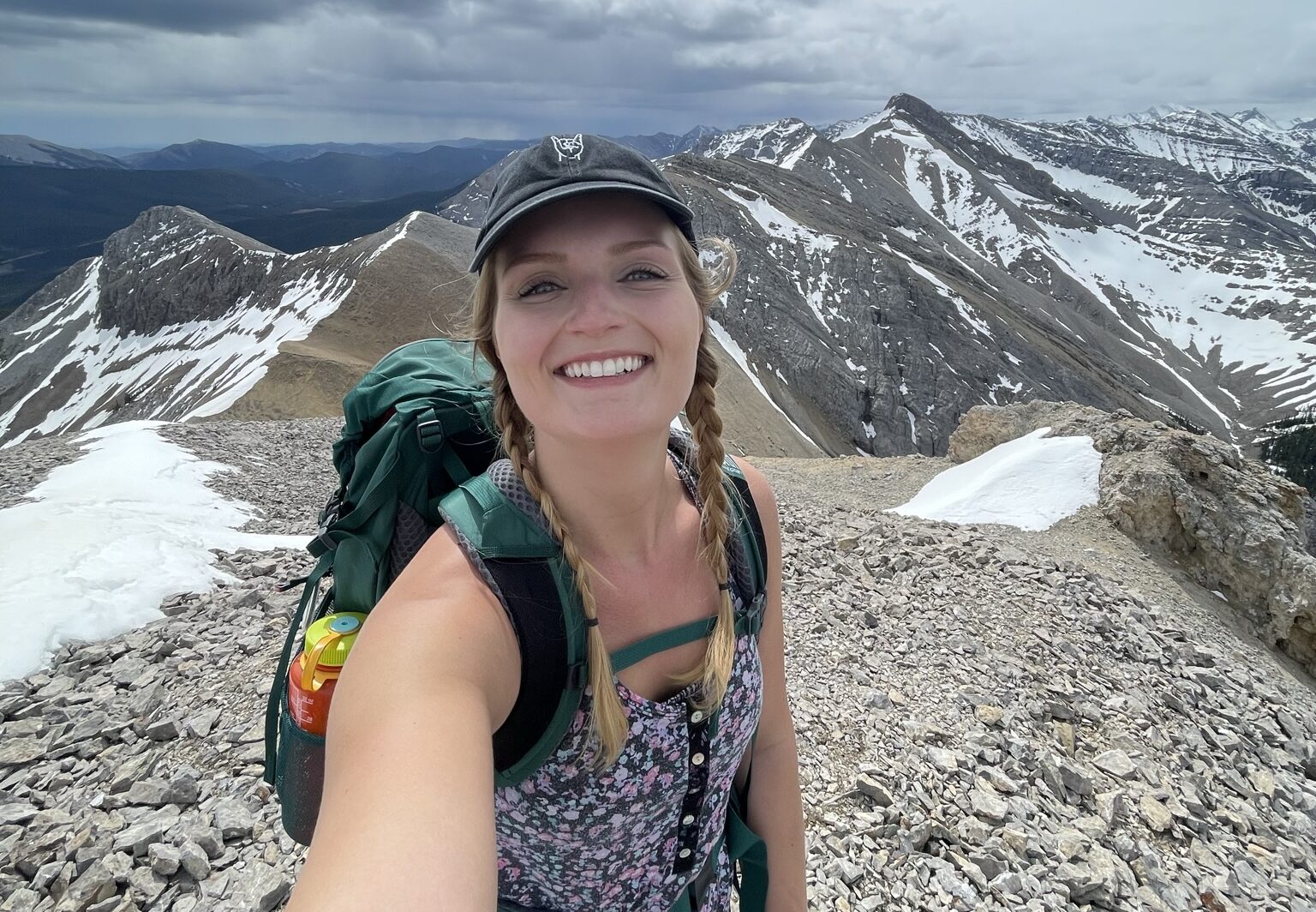If you’ve never hiked alone before, it can be pretty intimidating to be left to your own devices in the wilderness. With a little leap of faith, you just might discover that hiking solo is the best thing that you’ve ever done for yourself.
If you’re prepared, know the risks of the environment, and have a safety plan in place in case of emergencies, you will feel very confident hiking alone. It can be incredibly freeing to hike by yourself.
You don’t have to wait around for someone else to start living your life. Be brave, be bold, and wander into the wilderness with two feet and a heartbeat.
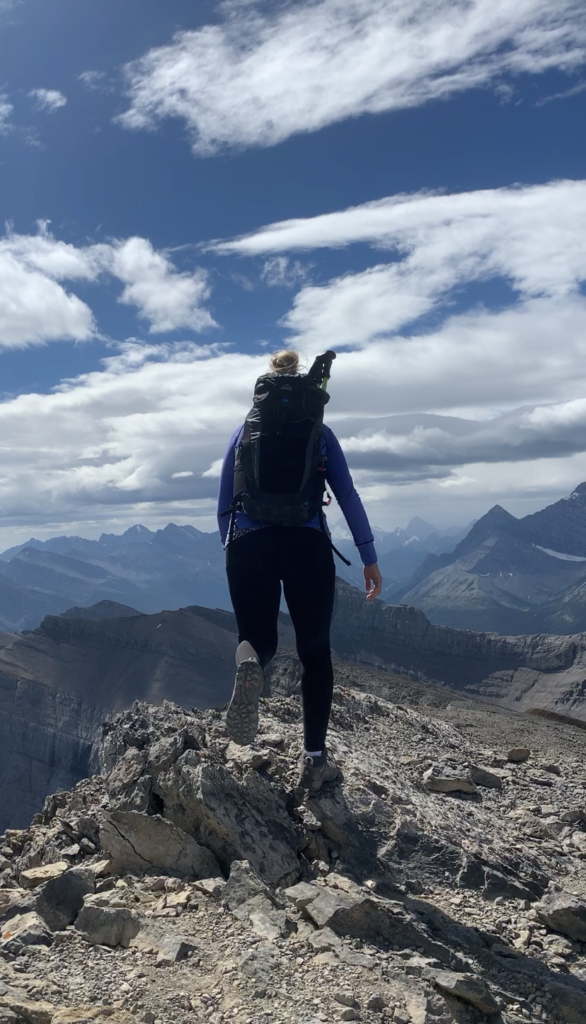
Why Would Someone Hike Alone?
People hike alone because it’s an enjoyable thing to do and an excellent form of exercise.
There are 9 reasons someone might choose to hike alone, including:
- To prove they are capable of doing it without another person
- To spend time alone with their thoughts and improve their mental health
- They may not have people to hike with, or might not have friends or partners who are interested in hiking
- They make shift-work or have unconventional times they want to hike that don’t work for others
- If they are hiking for exercise, they may prefer to exercise alone as they might hike faster or slower than others around them, or want to work on their fitness at their own preferred speed
- Feeling self-consciousness (physical appearance, fitness levels, interests, personality, etiquette, etc.) may prevent someone from including others on their activity if they feel judged
- Some people just enjoy solitude and being alone in general
- To get over the fear of doing things alone
- Although unconventional, it is possible to meet people while hiking, especially on popular trails. Some people might use it as an opportunity to expand their social groups.
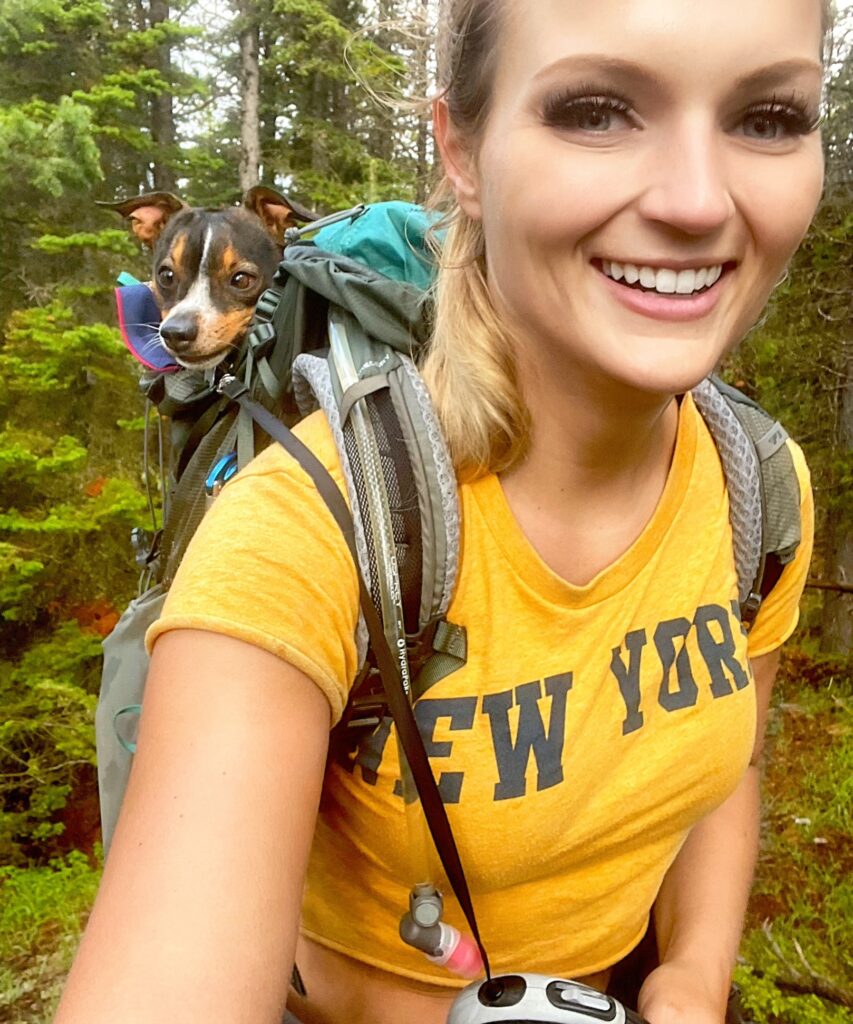
10 Benefits of Hiking Alone
There are ten benefits to solo hiking. They include:
1. You get to choose the trail.
You can choose how easy or difficult the trail is, and you can choose something familiar or unfamiliar to you. Whatever your preference is.
2. You get to choose the speed at which you hike.
If you struggle to keep pace with your friends, or you find you hike faster than others, you can set your own pace and exercise at your preferred speed.
3. You get to choose how far to go or when to turn around.
If you find the trail is too difficult, you’re too fatigued, or the weather is turning, you can choose to call it a day when your limits are hit. No one has to push you past your comfort zone if you aren’t wanting to continue.
4. You get to be alone with your thoughts.
Some people really benefit from having time alone to process their thoughts and feelings. Time alone in nature has many health benefits.
5. Push your limits and decision-making abilities.
When you’re alone, you have to make all decisions, including trail selection, route-finding, and safety. It can instill confidence to trust your decision-making abilities and not rely on others for direction.
6. You can take all the photos.
No one is going to judge your duck-faced selfies if there’s no one there to see you take them! You can take as many photos as you want in as many positions as you want and no one can make you feel embarrassed.
7. You don’t have to wait around for other people.
Not everyone has the same schedule or excitement level. If your friends don’t have the time or energy to hike, you don’t have to wait for them if you hike solo.
8. You can be weird and wonderful.
No one will judge you when you’re alone, and if you happen to pass by someone – they don’t know you and they’ll be behind you shortly anyway.
9. You really get to know yourself.
You learn how you solve problems and push your limits when you hike alone. You also learn what makes you nervous and what gives you confidence. You learn who you are, independent of other people.
10. It opens up a world of possibilities.
If you can hike alone, maybe you can do dinner alone, or travel alone, or do any number of exciting things on your bucket list without waiting for someone else!

People Who Should Hike Alone
- Those who want to hike more
If you can’t find people to hike with, hike alone. Your friends may have different interests, or might not have the same time off. Either way, don’t let other people stop you from adventuring!
- Individuals who have a different skill level than their peers
If you hike solo, you can hike as fast or as slow as you want to and work on your skills at your own pace.
- People who want to work on their mental health
Hiking alone is an excellent time to be alone with your thoughts. Nature is known for improving mental health.
- Hikers who know how to be safe and responsible in the backcountry
In my opinion, if you’re competent in your hiking knowledge and skills, you should try hiking alone at least once, if not making it a part of your usual routine.
People Who Should Not Hike Alone
- New backcountry hikers
If you’re unfamiliar with route finding, as well as safety and survival skills, you should maybe consider gaining some knowledge and experience before wandering out into the backcountry alone.
- People with debilitating fears
If you fear getting injured or lost to the point that you struggle to cope, you might consider working on these fears in other ways before subjecting yourself to exposure therapy.
- Individuals who don’t enjoy spending time alone
If you feel lonely when you spend time by yourself, you probably won’t feel different hiking alone. If you feel more energized and excited with friends, it’s ok to prefer hiking in groups.
- Hikers and influences who have photos as their main priority
While it is possible to take photos by yourself (I do all the time!) it is more difficult. As well, it can be harder to get long-distance photos and specific angles. If hiking “for the ‘gram” is your thing, you might not enjoy hiking solo.

Is It Safe to Hike Alone?
Yes, it is safe to hike alone, though it isn’t without risk. The risks that are present when hiking alone are the same risks present when you hike in a group.
If you know how to be safe in the backcountry and are prepared for emergency scenarios, you should be more than capable of hiking alone.
4 Risks of Hiking Alone:
1. Getting injured
While anyone can get injured while hiking, the risk of being alone and getting injured is that you don’t have anyone to help you.
Pack simple first aid supplies, and have a plan to call for help if you’re in a remote location. I recommend carrying a satellite phone (such as Garmin) for such emergencies.
2. Getting lost
When hiking alone, you have to do all the navigating and route-finding. It’s easier to get turned around when you’re by yourself.
Build cairns (rock piles) and observe your surroundings to help you navigate or backtrack if necessary. I also recommend following or laying a GPS track with a hiking app (AllTrails, Gaia, FatMap, etc.)
3. Animal attacks
There are some animals that present a threat to hikers, such as bears and cougars. Although they are a risk to all hikers, the incidences of groups being attacked are fewer than individuals being attacked. The risk is greater as a solo hiker.
You should always carry and know how to use bear spray when hiking. It should be easily accessible, such as on a chest strap or a hip belt, and not in the bottom of your pack.
Make noise when you’re hiking alone. It may feel silly, but it helps critters in the area be aware of your presence. Cheer, sing, or curse loudly. Avoid yelling “bear”, as others around you might think you have seen one.
I personally don’t find bear bells or music effective, which is cited in research articles as well. If you’re more comfortable using these items, that’s ok. But be sure to make noise vocally as well.
Take extra caution around food sources, such as berries, flowers, and streams. Also be aware that streams can drown out human voices more easily.
4. Human attacks
Although rare, the chance of getting attacked by another human while hiking is a risk that is elevated when you’re hiking alone.
However, that risk exists even when you’re not hiking.
Bear spray can also be an effective tool against human attacks while hiking. Always let a trusted person or registry know where you’re going and what time you should be back. Carry a satellite phone for help in emergency situations or hike in populated areas.
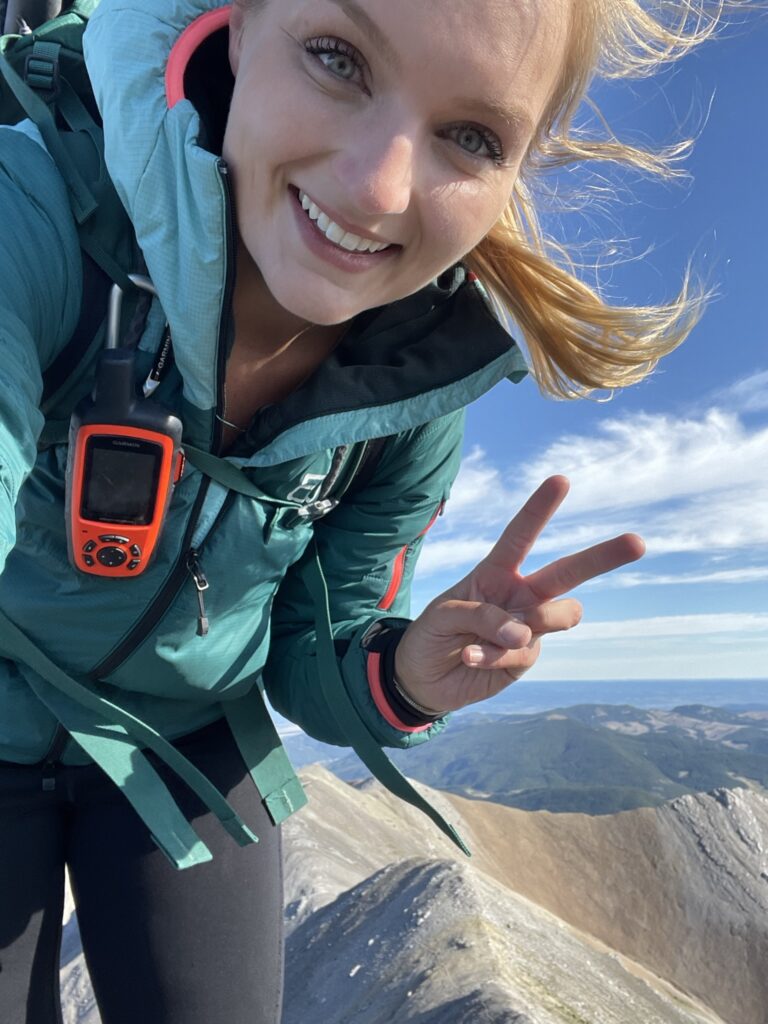
8 Tips to Hike Alone (& Get Over The Fear of Hiking Alone)
1. Do The Research
Knowledge is power. Research the trail you want to hike. Know the distance, elevation, and features of the terrain. Google how busy the trail is and the best times to go. Know how to be safe in the backcountry.
2. Talk To The Experts
Ask friends who hiked alone what their experiences have been. Join hiking groups on social media and ask for advice in forums (just be careful not to post details of where you’ll be!)
Knowing that other people you respect have hiked alone and enjoyed the experience can be comforting. Glean tips from the experts, and consider copying their routes to feel better about the outing.
3. Hike In A Popular Area
If you start solo hiking in areas where several people are, you might feel less alone.
Some people might not consider hiking alone on busy trails truly solo hiking, but you still get all the benefits of being alone with decreased risk. When you recognize like the risk is low, you should feel safer about hiking alone.
4. Start With A Familiar Trail
If you know you’re capable of completing a trail, you can have some confidence in knowing the area and not having to focus so much on where you’re going.
When you can focus on your thoughts and feelings, you might be better able to process what you’re going through and feel more calm about the situation.
Try picking an easy hiking trail and going out with some friends first. Once you feel more comfortable, try repeating this hike by yourself.
5. Take A Dog
If your fear is due to the worry of being harmed, having a dog with you might make you feel a bit more protected.
Dogs can help ward off predators, both animal and human. If you don’t have a dog, ask a friend if you can borrow one for the hike.
6. Have A Safety Plan
Knowing what to do in case of an emergency can help you feel more prepared to hike alone.
Having a first aid kit, a way to call for help (satellite phone), and a can of bear spray should give you some reassurance in feeling safe while hiking alone.
Let a trusted friend, family member, or registry know where you plan on hiking and what time to expect you back. If someone knows where you are, it might feel reassuring knowing that someone is waiting for you or would come looking for you.
Don’t occlude your hearing with headphones or earbuds. Be aware of your surroundings at all times.
7. Do Other Things Alone
Try going to the gym alone, swimming alone, biking alone, skiing alone, or doing any number of activities by yourself. If there’s something you feel confident doing alone, build up the skill of being alone by doing the other activity first before trying hiking alone.
If you’re really uncomfortable being alone, start small. Go for a walk around the block and slowly work up the distance. As you feel more comfortable, try different routes. When you feel ready, try a small solo hike.
8. Check-In With Friends Or Family
Find a hike that has cell service throughout the entire hike (it might take some research to do so). Typically, some of the more popular trails, or trails within cities, will have cell service.
If you have cell service, try checking in with someone you trust via text message, phone call, or video message. You can choose how often to check-in. Knowing that someone is following your journey and waiting for your messages might make you feel safer.
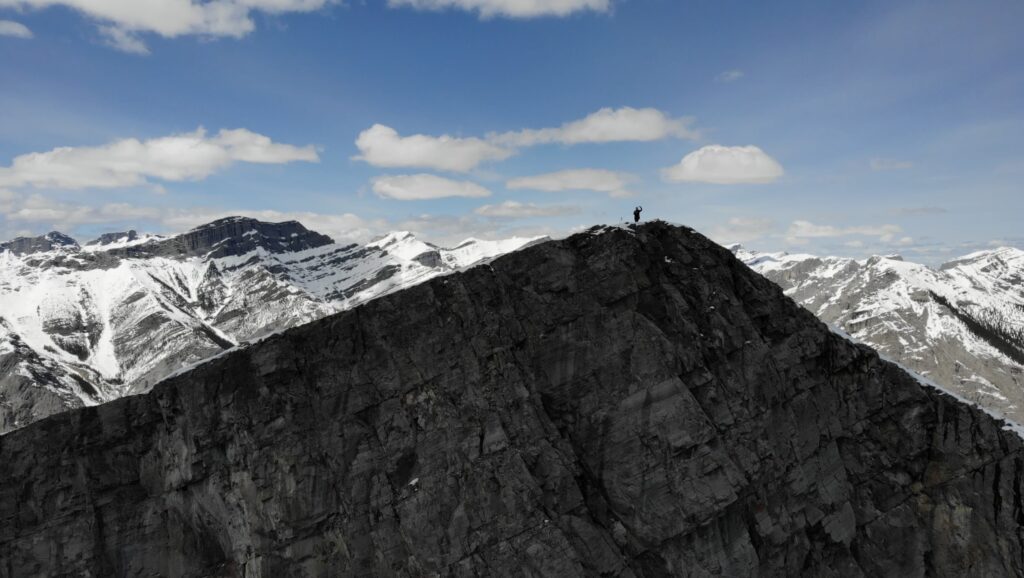
Hiking Alone as a Female
Hiking alone as a female isn’t really different than hiking alone as a male. Other than the aforementioned fears, the greatest concern from women who are hiking alone tends to be getting attacked by males.
People don’t typically wander out into nature with the intent to hurt others.
You might run into someone who’s having a bad day and chooses to yell at you for leaving some litter behind or wandering off trail. The chance of them assaulting you is very low. You’re much more likely to be tormented by boob sweat or an unplanned period than a stranger on the trail.
However, it’s never a bad idea to be prepared. You likely have bear spray with you for animal predators, and it should be easily accessible in case of an encounter. This is essentially strong pepper spray, and can be used against human attackers if needed for self-defense as well.
- Tell a trusted friend where you’re going and what time you should be back in cell service.
- Don’t occlude your hearing with earbuds or headphones when hiking.
- Be aware of your surroundings and take note if you’re being followed, particularly out of the carpark.
- Bring a dog with you if you’re nervous.
I personally hike alone fairly often, and I’ve never had a problem with strangers. I’ve gotten spooked by noises a handful of times, but the people I encounter on the trails all want to ensure I’m having a great time and am safe.
I’ve never had a safety problem hiking alone as a female.
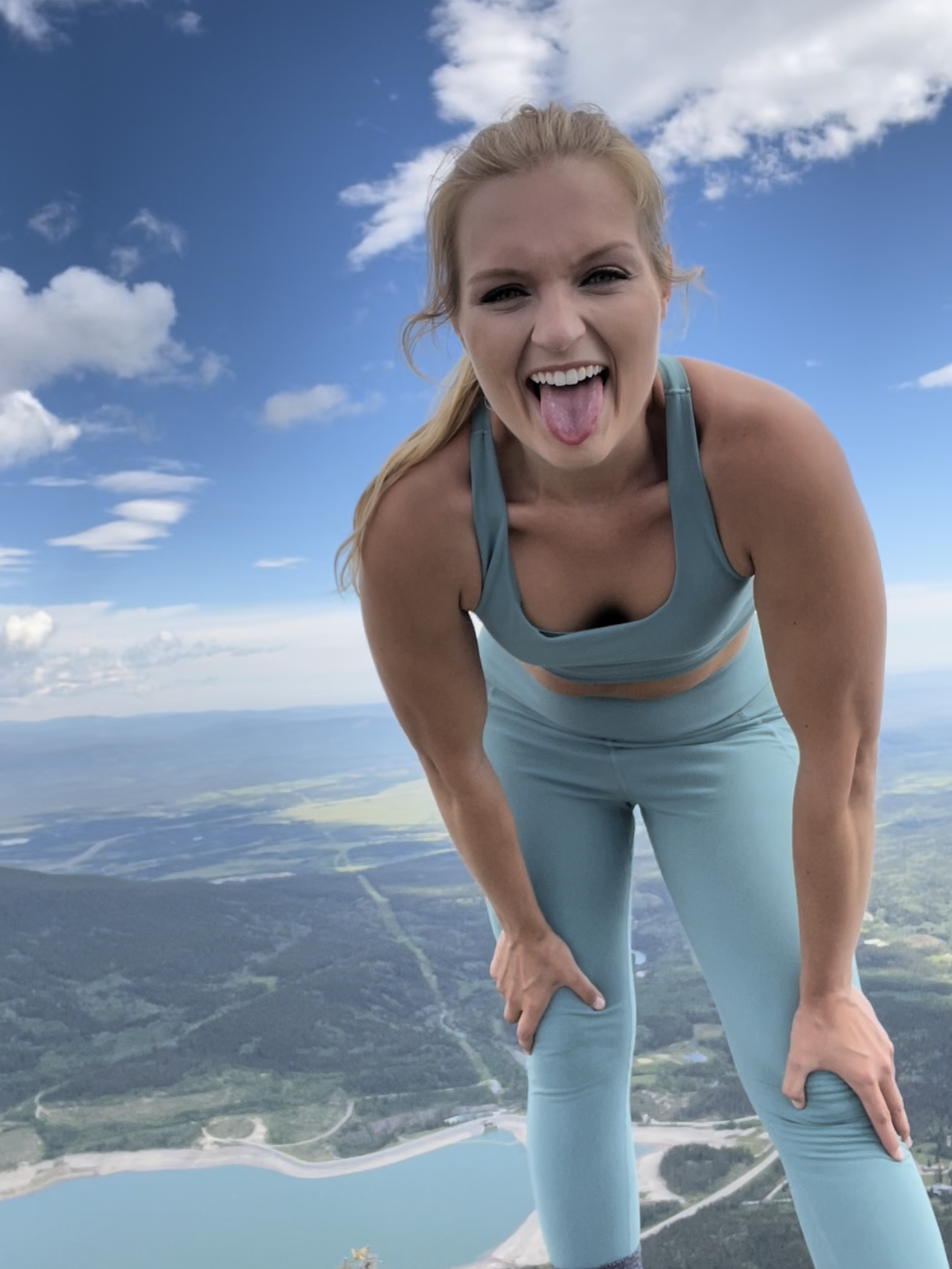
Night Hiking Alone
Realistically, the dangers of night hiking alone aren’t much higher than day hiking alone.
- The risk of getting lost or going off-route can be greater when night hiking alone.
Mitigate this by following a GPS track and checking it often to make sure you’re staying on route.
Conversely, follow a very maintained easy trail to decrease the chance of getting lost.
- The fear of getting attacked by a predator (both animal and human) feels elevated in the dark.
Typically, animals that pose a danger to humans aren’t as active in the dark. Decrease the risk by utilizing the same techniques as previously suggested.
Most humans also aren’t active in the dark. The chance of someone lurking in the dark, wanting to hurt you, and being on the same trail as you is very low.
The same safety strategies apply in the dark as they do in the light.
Four Tips to Hike Alone at Night:
- Get comfortable hiking alone in the daylight. If you’re not comfortable being alone during day hours, limiting one of your core senses won’t make you feel more secure. Start off in the daylight on familiar trails until a certain level of security in being alone is established.
- Start night hiking in groups. If you’re nervous to go alone in the dark, start by bringing some friends or a dog to make you feel more comfortable.
- Hike during sunrise or sunset where you’ll be in the dark for limited amounts of time. The sky gets lighter about 30 minutes before sunrise and 30 minutes after sunset. As you get more comfortable with this, you can extend the amount time you spend in the dark.
- Go camping. Simply getting used to the sounds and sights of nature at night can make you feel more comfortable hiking in the dark. Take friends or family, or use a camper for comfort to start.
What Do I Need To Hike Alone?
You really don’t need anything special to hike alone. Anything you would take hiking in a group you should take hiking solo.
- A first aid kit is more important when you’re hiking alone, and every hiker should carry bear spray and a form of communication like a satellite phone.
- Have a safety plan and let someone know where you’re going.
Know that it is not weird or unusual to hike alone. Actually, I think it’s very brave. Many people (myself included) hike alone, and love doing so.
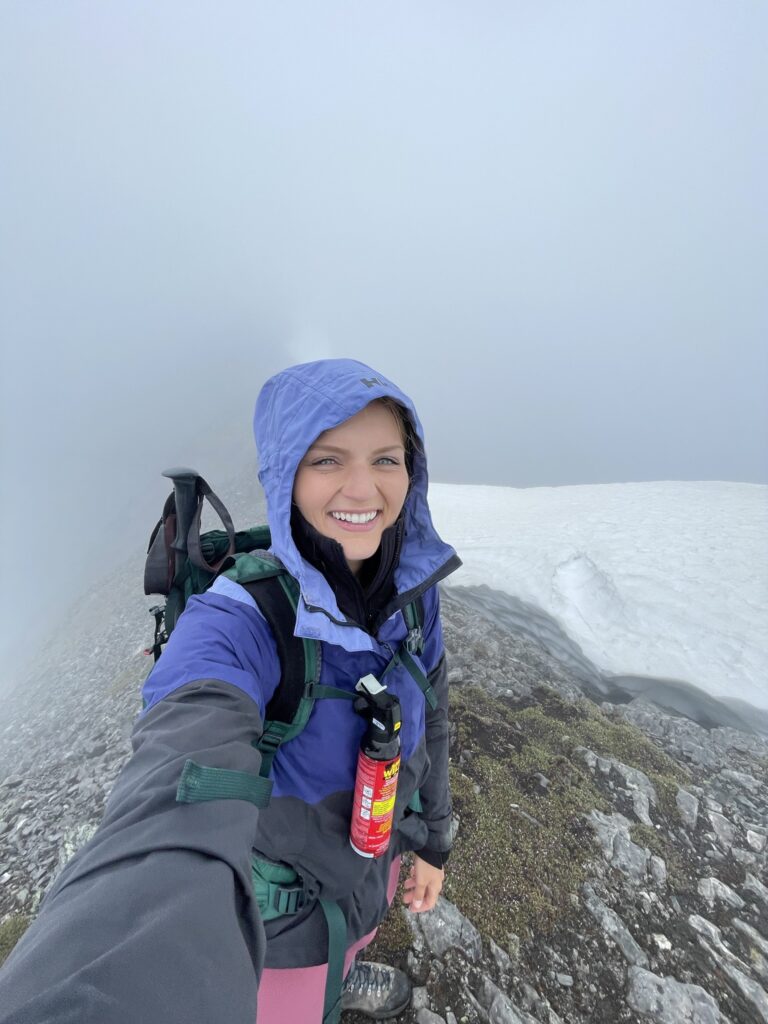
How to Take Pictures When Hiking Alone
When you’re hiking alone, all your pictures tend to be of the scenery which is lovely, but sometimes you might want pictures with you in them too.
To do this, you can utilize one of a four methods:
1. Record A Video
Position your phone off the ground using rocks, trees, your backpack, or any other features you can find.
Use the front-facing “selfie” camera for ease, and start a video. Back up (being careful of your surroundings) and maneuver yourself into the pose you want for your photo. Hold the position for a few seconds, then consider trying other poses.
Use the rear-facing camera if you want to change the depth of the lens. For example, one of the rear cameras on iPhones are able to capture video at 0.5x which will give you a wider angle. The downside of the rear-facing camera is that you can’t see what is being videoed.
After you have done a few poses, turn the video off. Watch the video back, and screenshot any poses you like. This way, you have photos with you in them where your arm isn’t in the way.
2. Take A Selfie
Take a regular selfie using the front-facing camera to capture your face and a small portion of the background.
Another option on an iPhone is to switch your phone to rear-facing camera, and place the depth on 0.5x magnification. Press the volume up button to take a picture. You will appear further away in the photo, and more of the background will be captured (though your arm will look very long).
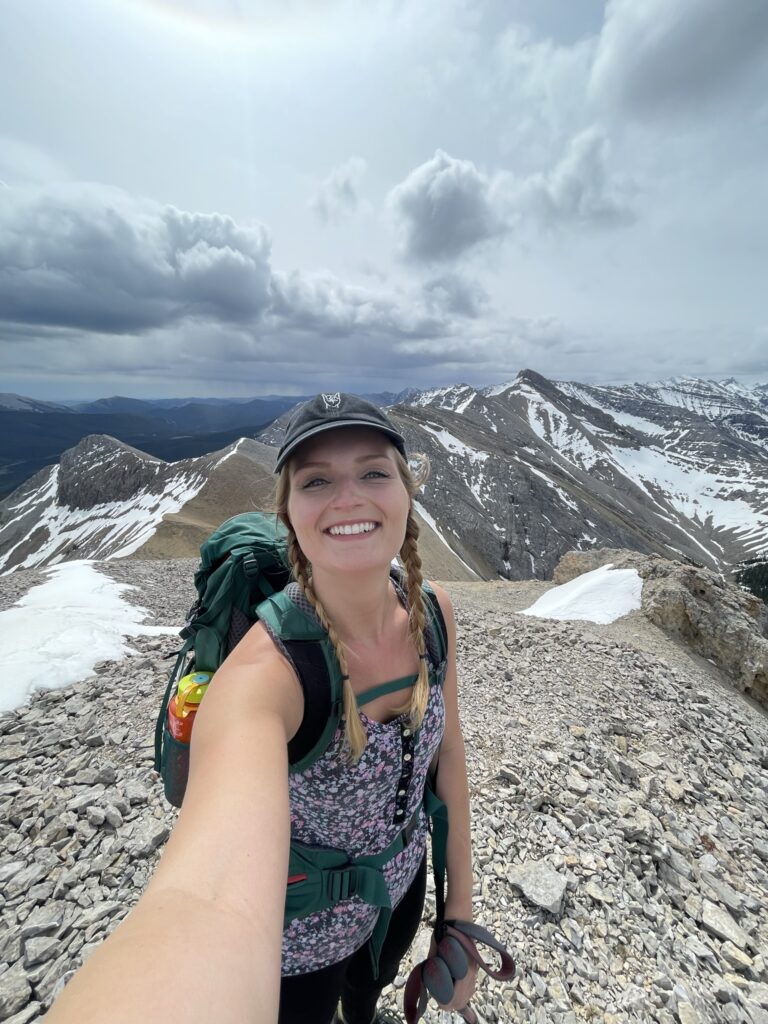
3. Self Timer
Prop your phone up on rocks, trees, backpacks, foliage, or whatever else is available to you. Utilize the 10-second or 3-second timers and run back for a photo. Just be extra cautious running in your surroundings – slip and fall hazards may be present.
The series-7 (and newer) Apple Watches have a camera app on the screen that allows you to control the camera from a distance with a timer. The benefits of the watch are that you can see the image that will be captured, and it prevents you from having to run away from the phone. It is a safer option.
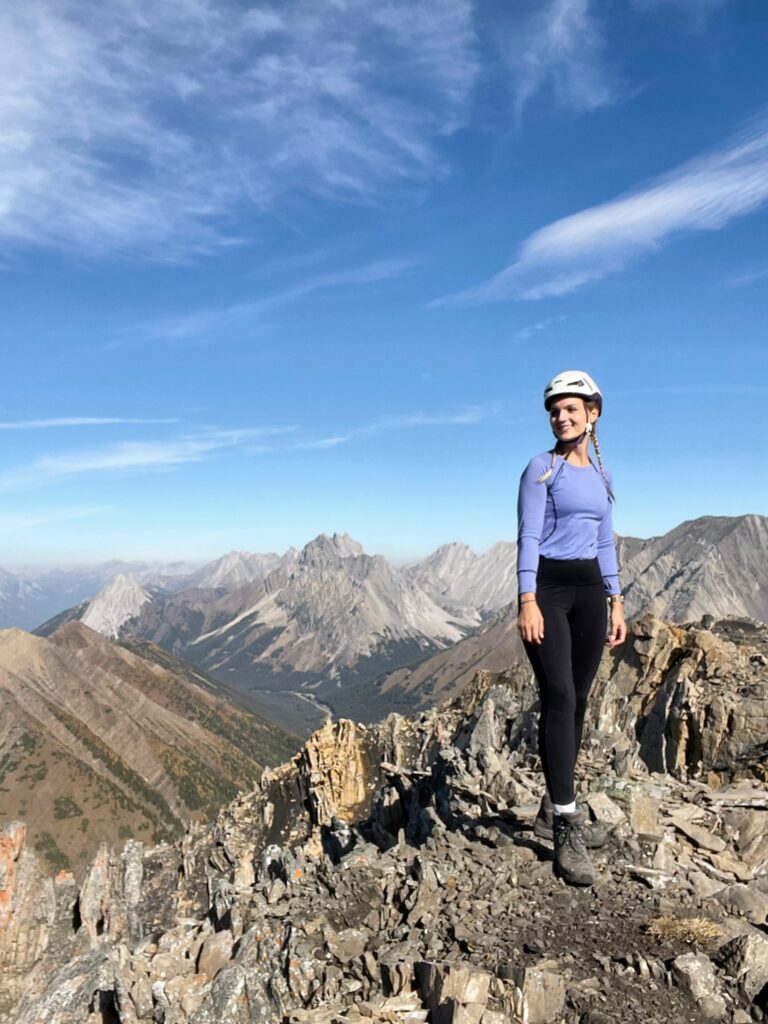
4. Remote Control
There are remotes available for purchase that connect to your phone via Bluetooth. Once paired, you can set off the camera from a distance, preventing the need to run from a self-timer.
There are also remote control options for DSLR cameras, though they can be quite pricey.
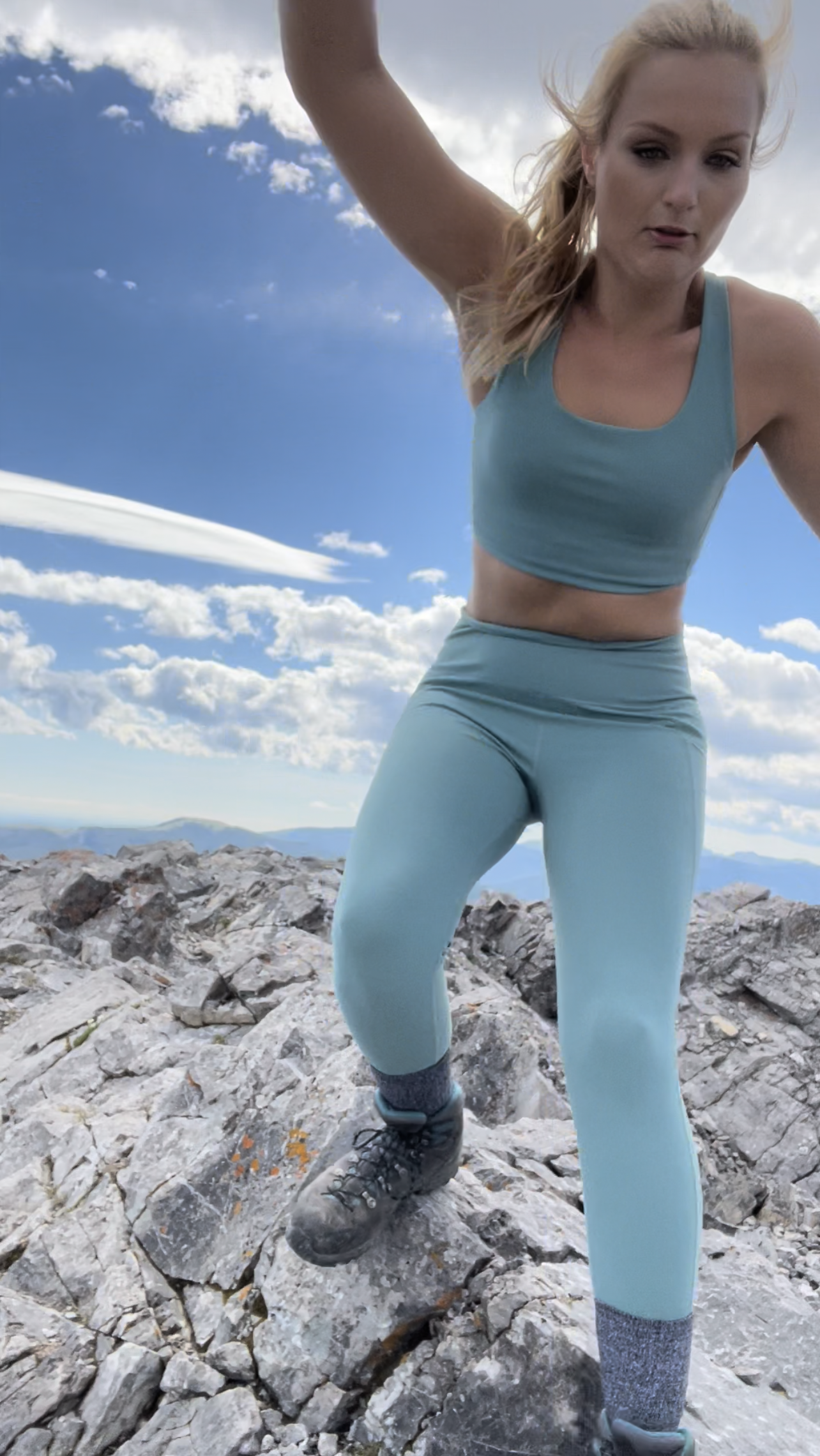
5. Drones
Drones have many restrictions on where and when they can be used. Be sure to follow all laws and ensure you have proper licensing and permissions.
Drones can take both pictures and videos, and result in high-resolution images. You can also screenshot images from drone footage.
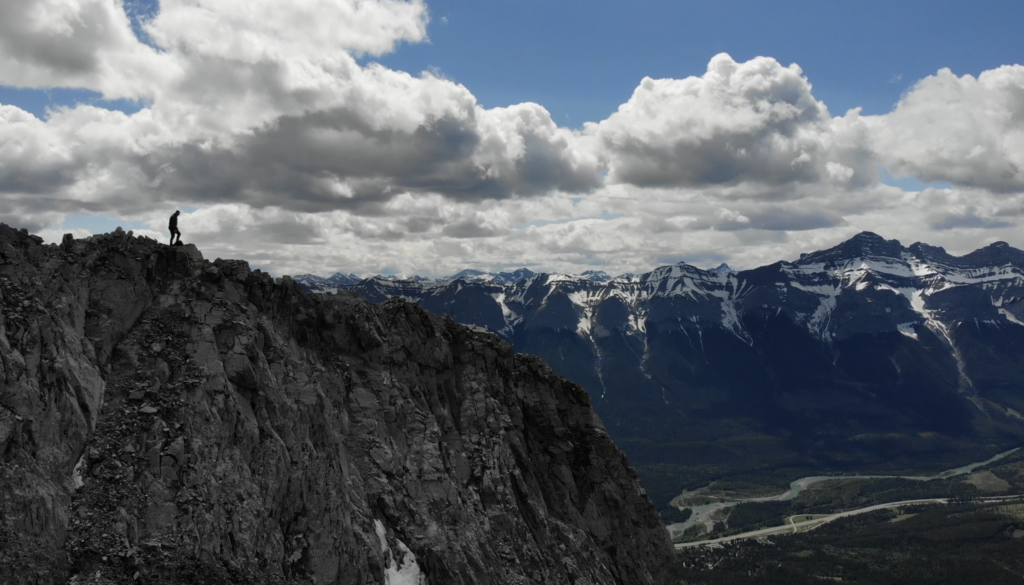
Do you hike alone? How did you get into it? Do you feel it’s safe? Why would you recommend or not recommend hiking alone? Did I miss something? Let me know in the comments!
Happy trails!

